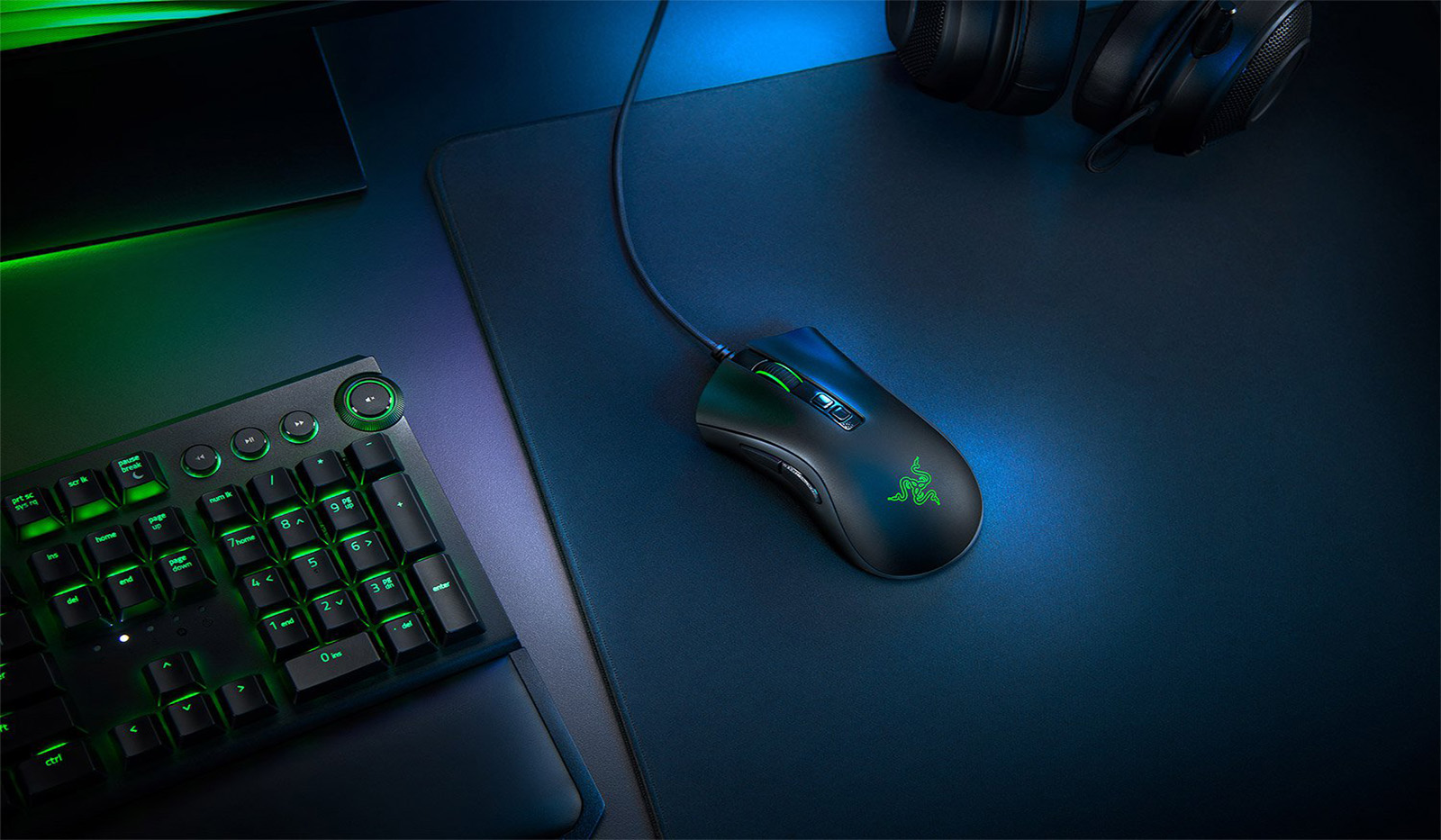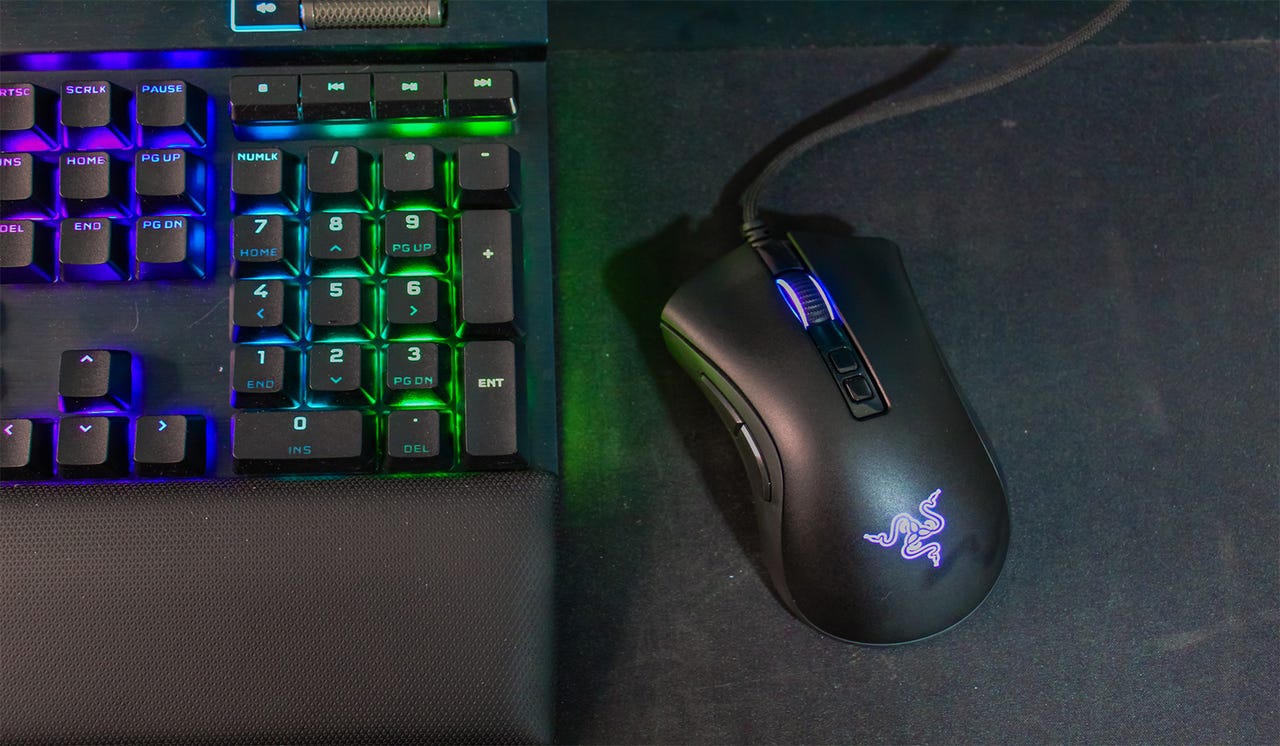'ZDNET Recommends': What exactly does it mean?
ZDNET's recommendations are based on many hours of testing, research, and comparison shopping. We gather data from the best available sources, including vendor and retailer listings as well as other relevant and independent reviews sites. And we pore over customer reviews to find out what matters to real people who already own and use the products and services we’re assessing.
When you click through from our site to a retailer and buy a product or service, we may earn affiliate commissions. This helps support our work, but does not affect what we cover or how, and it does not affect the price you pay. Neither ZDNET nor the author are compensated for these independent reviews. Indeed, we follow strict guidelines that ensure our editorial content is never influenced by advertisers.
ZDNET's editorial team writes on behalf of you, our reader. Our goal is to deliver the most accurate information and the most knowledgeable advice possible in order to help you make smarter buying decisions on tech gear and a wide array of products and services. Our editors thoroughly review and fact-check every article to ensure that our content meets the highest standards. If we have made an error or published misleading information, we will correct or clarify the article. If you see inaccuracies in our content, please report the mistake via this form.
Razer DeathAdder V2 review: A gaming mouse workhorse for serious gamers

Razer is one of the biggest names in gaming, providing top-tier peripherals like keyboards, mice, headsets, and microphones along with high-end laptops and chairs to kit out your gaming space fully. Their DeathAdder V2 mouse is one of their most iconic models, and it nabbed a top spot in our list of the best gaming mice you can buy. Its sweeping, ergonomic shape makes it comfortable for claw, fingertip, and palm grips, and the intuitive button layout makes it perfect for both work and gaming. When coupled with Razer's Synapse desktop app, the DeathAdder V2 can be customized to suit a variety of game genres, art and photo editing programs, and even office software to become the ultimate workhorse.

Razer DeathAdder V2
pros and cons
- Can store up to 5 configuration profiles
- Comfortable, ergonomic design
- Thumb buttons
- Good for palm and claw grips
- Right-handed configuration only
- Synapse app is a bit clunky
- May not be comfortable for smaller hands
Pricing
The Razer DeathAdder V2 retails for $69.99 (£69.99, AU$139.95, CA$99.99, €79.99), which puts it in the same price range as the Logitech G502 hero ($79.99), Corsair Ironclaw ($59.99), and SteelSeries Rival 5 ($59.99). The cost is on the higher end of tolerable for a more basic gaming mouse, but Razer has always been known for their higher prices, which means you're mostly paying for brand recognition, but there is some top-notch tech and engineering that helps to justify the $70.
Design and performance
The biggest selling point for the DeathAdder V2 is its ergonomic design. The body features a sweeping curve to better fit your hand's natural resting position, while the main left and right-click buttons have a contoured shape to enhance comfort. The left and right-click buttons use Razer's proprietary infrared laser switches rather than traditional membrane or Omron mechanical switches. The laser beam works with a gate attached to each button to register clicks with a response time as low as 0.2 milliseconds; the laser and gate system also prevents actuation from accidental half-presses while adjusting your grip or changing your mind about an in-game action. Since the switches aren't mechanical, clicking feels a bit softer than other Razer models and even from other brands. This helps to dampen the sound a bit while working or gaming, making the DeathAdder V2 great for shared work or gaming spaces where extra noise can be a distraction to coworkers and teammates.
Both the thumb rest and the outer edge of the mouse feature integrated, textured pads for better control while using a claw or fingertip grip, and the entire mouse has a matte finish for better grip even if your hand gets sweaty during long work days or gaming sessions. The body of the mouse is a bit longer than other gaming mice, which helps with ergonomics but may not be as comfortable to use if you have smaller hands. For me, going from the HyperX Pulsefire Haste to the DeathAdder V2 took a bit of time to get used to since the Pulsefire Haste is much shorter and fits my hand a bit better. I adjusted my palm grip to sit further back on the DeathAdder V2 so that the apex of the body curve fit in the center of my palm. This made it a bit more comfortable for me to use while still keeping the thumb buttons within easy reach as well as the left and right-click buttons responsive; you can actually rest your fingertips almost level with the DPI selector buttons and still get a left and right-click response from your mouse, which is great news if you share a gaming PC with kids.
If you do share a gaming PC with your kids, partner, or roommate, the DeathAdder V2 has enough onboard memory to store up to 5 different configuration profiles. The bottom of the mouse has a button for selecting which configuration you want, with a helpful pop-up notification on your monitor that lets you know which one you've chosen. The onboard memory is also great if you want the DeathAdder V2 to double as a work mouse; you can set up custom button inputs for programs like Photoshop, Google Docs, and Chrome for a more efficient workflow. I have a dedicated gaming profile where the thumb buttons control things like toggling, crouching and reloading weapons, as well as separate layouts for Photoshop, Lightroom, Google Docs, and Google Sheets to help streamline my workflow and easily transition from work to gaming.
The optical sensor has 5 different DPI sensitivity presets (400, 800, 1600, 2400, and 3200), but you can customize these with a slider with as little as 100 DPI to a max of 20,000. You can also adjust the polling rate from 125Hz to 1000Hz to strike the perfect balance between speed and accuracy. You can even save different DPI and polling rate settings to each custom profile so you can quickly aim and fire in games like Apex Legends, have slower, more deliberate movements in racing games like Forza Horizon 5 for more control over your vehicle while taking on dangerous tracks, or get pixel-perfect accuracy while editing photos and graphics in Photoshop.
The DeathAdder V2 connects to your PC via the USB cable, which has a woven outer cover that not only protects the wire from tangles and damage but provides smoother, easier movement while being dragged across the surface or edge of your desk. The underside of the mouse also has PTFE feet for fast, smooth movement over both woven-top and hard-surface mouse pads or even a bare desktop. The profile selection button is slightly recessed, which helps prevent accidental profile switching when moving the mouse around. The top of the mouse has two different DPI selection buttons: one to cycle up and the other to cycle down. These are slightly recessed between the left and right-click buttons, which prevents accidental presses while working, gaming, or adjusting your grip. But they're still easy to find by touch alone for quick-selecting sensitivities or activating custom program actions when you need to. And the scroll wheel features ratchet movement for better accuracy when selecting weapons and abilities in games or scrolling through web pages, documents, and spreadsheets.
If your gaming space doubles as a home office, or you share a space with someone, the DeathAdder V2 features subtle RGB lighting in the scroll wheel and logo. Personally, I would have preferred it to be either only in the scroll wheel or not there at all since a palm grip covers up the logo's lighting and color effects. But having a more understated RGB scheme, the DeathAdder V2 is great for shared workspaces where flashing colors and lights could be a distraction or even cause issues for anyone with photosensitive medical issues.
Razer Synapse app and Razer Rewards
In order to set up custom button layouts, DPI sensitivities, and RGB lighting effects, you'll have to download the Synapse desktop app. Creating custom button profiles is easy enough: by clicking the "Customize" tab, you'll pull up an overview of the DeathAdder V2's default button profile. You'll then be able to select each button, except left-click, which is locked, and create custom keyboard or mouse shortcuts, have that button launch specific programs, control media, cycle lighting effects, or even disable that button from being used at all. Disabling buttons is a great function to have if you want to simplify mouse inputs for children who want to play games or need to use the computer for schoolwork; you can disable the DPI selectors and thumb buttons, leaving the scroll wheel and left and right-click buttons as the only inputs for writing reports in Word or browsing the web to research and attend virtual classes.
The "Performance" tab is where you can customize each of the 5 DPI sensitivity levels as well as the sensor's polling rate. The "Lighting" tab is where you customize the RGB effects and colors with the 5 included effects and millions of custom colors. The "Calibration" tab is where you'll go if you need to readjust your optical sensor for any reason; you can either use the "Smart Tracking" selection to automatically analyze your mouse pad or desk surface and adjust the sensor accordingly or if you're intrepid enough, you can calibrate your mouse manually. Manual calibration is best for if you plan on using the mouse on a variety of different surfaces, like a cloth mousepad for work and a hard-surface mat for gaming, or a glass-top or glossy-surface desk for presentations. Since your selections and profiles are saved to a cloud-based profile, you can access your changes on multiple different devices, which is great if you travel for work or gaming tournaments and need to make adjustments to compensate for not having your usual setup.
The Synapse app is also where you can quickly access other Razer modules like Chroma Studio, which allows you to create custom effects and colors for your RGB peripherals, and Chroma Connect, which syncs your game audio or music to your RGB lighting for reactive effects. You can even check which Razer devices are compatible with Synapse, access the Razer store and customer support, register your mouse for warranty coverage, and access your Razer Gold and Silver wallets.
Razer Gold and Silver are part of the company's customer rewards program. Gold is a store-specific currency similar to adding money to your Steam Wallet; it has a 1:1 conversion rate, so $1 equals one Razer Gold. You can have up to 500 Gold in your Razer Wallet, allowing you to periodically add money to save up for a new mouse and keyboard combo, laptop, or monitor. When you want to reload your Gold, you can use PayPal, a Visa or MasterCard, or even Dollar General gift cards, which is awesome news for anyone who lives in a more rural area and doesn't have access to a debit card or PayPal.
Razer Silver acts more like rewards points. You'll get up to 5% back on your purchases in the form of Razer Silver, and there are three tiers of Silver to incentivize you to spend more. At level 1, a single dollar spent equals 25 Razer Silver. To reach Level 2, you have to spend $500 on Razer's website or in physical Razer stores, and once you do that, a single dollar equals 50 Silver. Level 3 requires you to spend $1,000 on Razer's site or in stores and bumps your rewards up to 100 Silver for every dollar spent. Once you have a good amount of Silver, you can use that to get exclusive rewards like free Razer Gold, free games, or even big-ticket items like an Iskur gaming chair or Kiyo Pro webcam. The rewards program is entirely optional, so you don't have to opt into it if you only want to use Synapse for custom mouse profiles and creating RGB lighting effects to show off your personal style.
Conclusions
The DeathAdder V2 from Razer is a well-balanced gaming mouse that suits a variety of genres as well as different programs for work if you're looking for a mouse to pull double-duty. With a quick-selector button to cycle through 5 configuration profiles, it's easy to transition from work to gaming or change button layouts for different games. The Synapse app makes it easy to change button actions RGB lighting, and calibrate your mouse's optical sensor as well as access Razer's store, rewards program, and customer support if you need to troubleshoot any issues or replace a defective unit.
The mouse's ergonomic design makes it comfortable to use during long days at the office or weekend gaming sessions with friends. The left and right-click buttons feature a sweeping contour for more comfortable clicking, and the textured thumb rest and outer edge give you greater control when using a fingertip or claw grip. If I were to level any complaints against the DeathAdder V2, it would be that it's only available in a right-handed configuration; so anyone who prefers a symmetrical, ambidextrous design or is left-handed is out of luck. The mouse is also on the larger side, making it less comfortable to use if you have smaller hands, though you can adjust your grip to accommodate. In the end, the DeathAdder V2 is well worth the $70 to upgrade your gaming or work setup.
Alternatives to consider
If you're still weighing your options while shopping for a new gaming mouse, here are some strong competitors to the DeathAdder V2 from Corsair, Logitech G, and SteelSeries:
